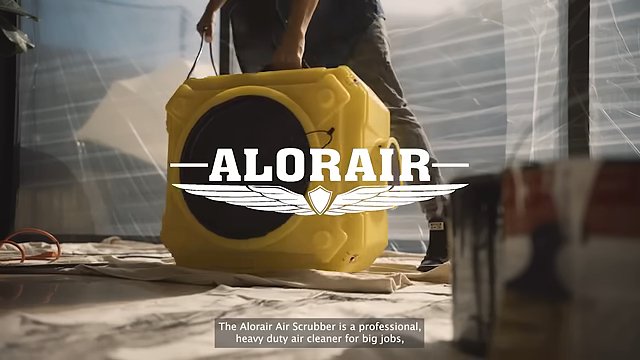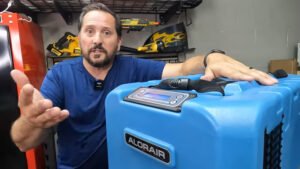Effective control of ambient moisture is fundamental for safeguarding assets, preserving product integrity and ensuring operational efficiency across industrial and commercial facilities. Fluctuations in relative humidity can precipitate condensation, corrosion and biological growth, undermining manufacturing processes, inventory storage and occupant comfort. The global market for commercial moisture removal solutions exceeded USD 2.35 billion in 2024, with projections to surpass USD 3.28 billion by 2030 at a compound annual growth rate of 5.7 percent (Home Depot). Demand for industrial moisture control has intensified in sectors including food processing, pharmaceuticals, data centers and warehousing, where precise humidity management systems are essential. This analysis examines leading and noteworthy dehumidifier brands—AlorAir, Kesnos, Waykar, ANDTE, TURBRO and SAHAUHY—evaluating their technology, performance, and suitability for diverse applications such as warehouse dehumidifier solutions, reduce humidity in factories and large-scale dehumidifiers for flood restoration and process drying.
Market Segmentation and Technology Trends

As of 2024, the industrial segment constituted approximately 57 percent of total market revenue, driven largely by facilities requiring dew points below 5 °C and continuous operation in cold environments (Walmart). Within this segment, desiccant-based systems dominate revenue share (USD 1.8 billion in 2023), owing to their superior low-temperature performance and energy-efficient regeneration—often utilizing waste heat to achieve up to 30 percent lower energy consumption versus mechanical refrigeration in environments below 10 °C (Kesnos). Refrigeration-based units remain prevalent for moderate-temperature applications, particularly where initial capital outlay and simplicity of installation are prioritized.
Key drivers shaping the market include:
-
Expansion of climate-controlled warehousing to protect electronics, bulk commodities and archival materials
-
Stringent indoor air quality regulations for data centers and clean-room manufacturing
-
Sustainability mandates promoting energy-efficient HVAC and dehumidification solutions
Evaluation Framework
Selection of an optimal dehumidification system requires assessment across multiple parameters:
-
Extraction capacity (pints or liters per day under specified test conditions)
-
Energy efficiency, expressed as liters (or pints) removed per kilowatt-hour
-
Control integration, including support for BACnet, Modbus or IoT platforms
-
Construction materials suitable for corrosive or wash-down environments
-
Maintenance features, such as washable filters, accessible coils and onboard diagnostics
-
Mobility and modularity, encompassing wheel kits, stackable housings and scalable arrays
Lifecycle cost of ownership encompasses capital expenditure, annual energy consumption and scheduled maintenance over a typical 10-year horizon. Facilities targeting professional dehumidification should procure performance curves reflecting site-specific temperature and humidity to avoid oversizing or undersizing.
Top-Rated Brands
AlorAir
AlorAir’s Storm LGR 1250 represents a benchmark in high-capacity dehumidifiers for flood restoration and large-scale moisture control. It extracts up to 264 pints per day at AHAM conditions (86 °F, 80 percent RH) and 275 pints per day at saturation (95 °F, 90 percent RH), delivering 3.27 L/kWh and 440 CFM airflow in a compact 26.1″×17.6″×15.5″ footprint (alorair.com). Key features include:
-
Heavy-duty condensate pump with 14.7 ft lift
-
Automatic defrost and memory-start functionality
-
MERV-10 washable filter and digital LCD control
-
cETL certification and 5-year warranty
The Sentinel HDi 100 model offers 220 pints/day extraction with microchannel condenser technology, increasing heat-exchange efficiency by 30 percent and refrigerant dispersion by 50 percent, tailored for whole-home and light-commercial applications up to 2,900 sq ft (alorair.com).
Kesnos
Kesnos furnishes cost-effective commercial climate control units optimized for reducing humidity in factories and large storage areas. Its 155 pint/day model (PD606A) covers up to 7,500 sq ft, incorporating:
-
Integrated condensate pump and 6.56 ft drain hose
-
24-hour timer and auto-restart after power loss
-
Washable air filter and intuitive LED display
-
Washable D-MAX silica gel rotors in advanced variants
Higher-capacity units include the 232 pint/day PD900AC, suited for up to 8,000 sq ft, featuring a rugged anti-collision housing and gravity drainage option (Kesnos). Energy consumption averages 2.5 kWh/L under standard conditions, aligning with mid-tier professional dehumidification requirements.
Waykar
Waykar’s portfolio emphasizes versatility from crawl spaces to expansive warehouses. The 291 pint/day commercial dehumidifier removes moisture from areas up to 9,000 sq ft, integrating:
-
Digital touch-control panel with automatic humidity regulation
-
Pressurized drain hose port and gravity-drain compatibility
-
Universal castors with brakes for seamless mobility (Waykar)
Its 130 pint/day ENERGY STAR model (JD026E-130) accommodates up to 6,500 sq ft with 2.04 gal collection tank and 10 percent–90 percent RH control range, targeting warehouse dehumidifier solutions in moderate-duty contexts (Waykar). High-capacity offerings extend to 320 pints/day for 9,500 sq ft in the DP1201B series, combining built-in pumps and auto-defrost for flood recovery and industrial process drying (Waykar).
Additional Noteworthy Options
ANDTE
ANDTE’s commercial line centers on industrial dehumidifier units at competitive price points:
-
190 pint/day DS190P covers up to 2,400 sq ft with built-in pump, 24-hour timer and auto-defrost (ANDTE).
-
250 pint/day DE270P supports up to 3,200 sq ft, offering six speed settings and a low-noise design (< 55 dBA) for gymnasia and retail environments (Payless Home Goods).
-
305 pint/day DE320P engineered for up to 9,000 sq ft, delivering robust performance in flood restoration and large-scale process control.
TURBRO
TURBRO’s Greenland series demonstrates synergy of high-capacity dehumidifiers and energy-saving innovations:
-
165 pint/day GL150P removes moisture from 7,500 sq ft, utilizing R32 refrigerant and a solenoid-valve defrost system that reduces defrost duration by 50 percent versus competitors (Amazon) (turbro.com).
-
245 pint/day variant extends coverage to 8,500 sq ft, rated at 350 CFM and featuring auto-drain pump lift to 16.4 ft, suited for warehouses and construction drying (turbro.com).
SAHAUHY
SAHAUHY addresses warehouse dehumidifier solutions with mid-range units:
-
158 pint/day commercial model manages spaces up to 6,800 sq ft, equipped with remote monitoring, auto-defrost and washable filters for low-maintenance operation (sahauhy.com).
-
168 pint/day option covers 7,200 sq ft, incorporating memory-start and overflow protection for uninterrupted service in library archives and storage facilities (Amazon).
Comparative Overview
| Brand | Model/Capacity | Coverage (sq ft) | Drainage | Energy Efficiency | Key Feature |
|---|---|---|---|---|---|
| AlorAir | Storm LGR 1250 / 264 ppd | 3,800 | Built-in pump (14.7 ft) | 3.27 L/kWh | Stackable, memory-start, MERV-10 filter (alorair.com) |
| Kesnos | PD606A / 155 ppd | 7,500 | Pump + 6.56 ft hose | ˜ 2.5 kWh/L | 24 hr timer, washable filter (Kesnos) |
| Waykar | 291 ppd | 9,000 | Gravity or pump | 2.1 kWh/L (est.) | Digital touch control, castors (Waykar) |
| ANDTE | DS190P / 190 ppd | 2,400 | Pump | 2.8 kWh/L (est.) | 6-speed, low noise (ANDTE) |
| TURBRO | GL150P / 165 ppd | 7,500 | Pump + 16.4 ft lift | 2.9 kWh/L (est.) | R32 refrigerant, rapid defrost (Amazon) |
| SAHAUHY | 158 ppd | 6,800 | Drain hose | 3.0 kWh/L (est.) | Remote monitoring, auto-defrost (sahauhy.com) |
Dehumidifier Buying Tips
-
Match capacity to moisture load: Calculate moisture ingress and extraction requirements (L/day) at worst-case ambient conditions.
-
Select pumping method: For sub-ground applications, ensure built-in pump lift exceeds static head; gravity-drain may suffice for elevated drains.
-
Prioritize energy metrics: Request performance curves under site-specific psychrometric points; target > 2.5 L/kWh for sustainable operation.
-
Evaluate control integration: Confirm compatibility with existing BMS or IoT dashboards for remote monitoring and alarm logging.
-
Assess maintenance ease: Front-access coils, washable filters and standardized rotor replacements reduce downtime and service costs.
-
Consider enclosure resilience: Stainless-steel or rotomolded polyethylene housings withstand corrosive atmospheres and physical impact.
Future Outlook
Rising industrial digitization and green building regulations will spur advances in commercial climate control and humidity management systems. Innovations in hybrid desiccant-refrigerant cycles, smart sensor networks and modular system architectures are poised to deliver enhanced precision, lower energy footprints and streamlined serviceability. The brands assessed here—AlorAir, Kesnos, Waykar, ANDTE, TURBRO and SAHAUHY—offer a spectrum of professional dehumidification solutions, enabling facility managers to tailor moisture-control strategies to diverse environmental and economic priorities.



